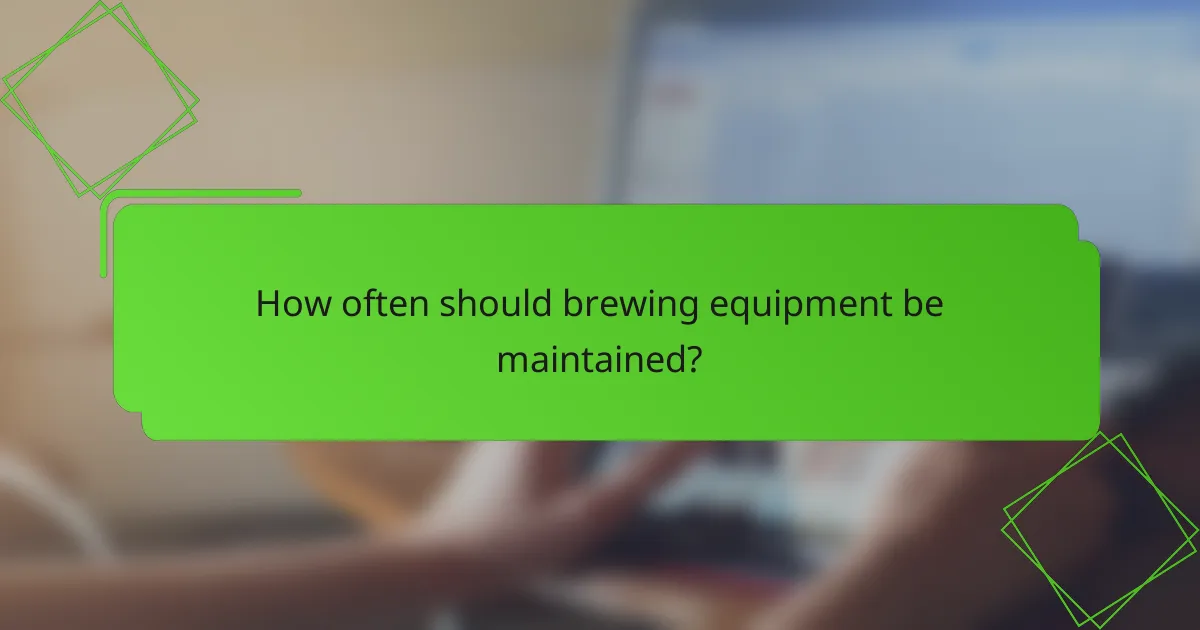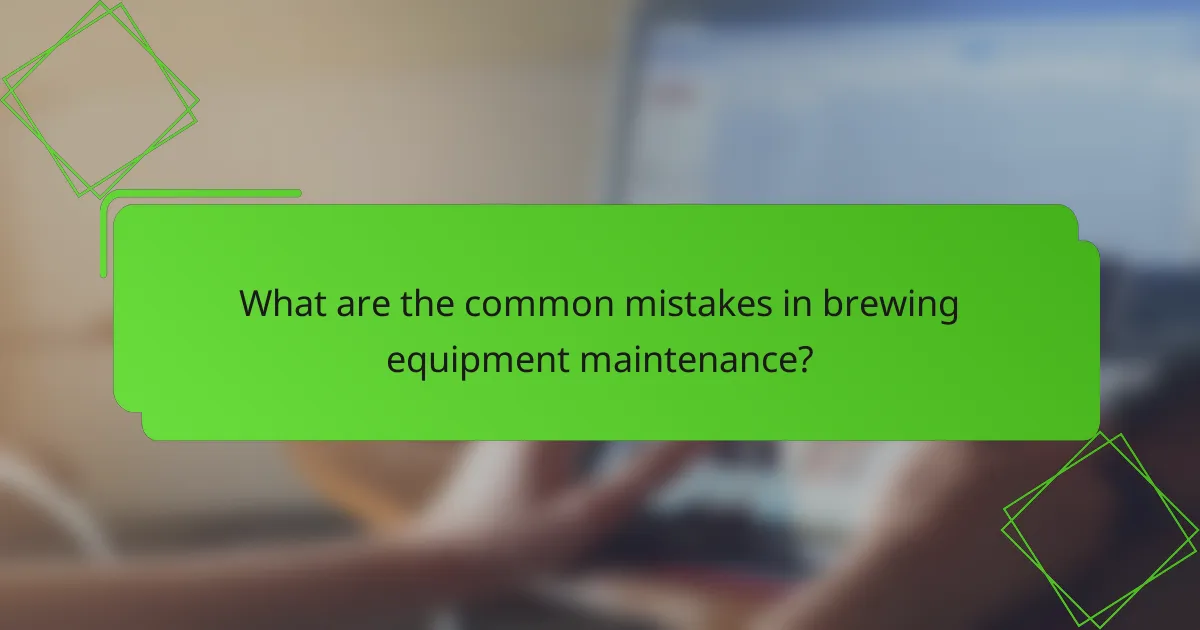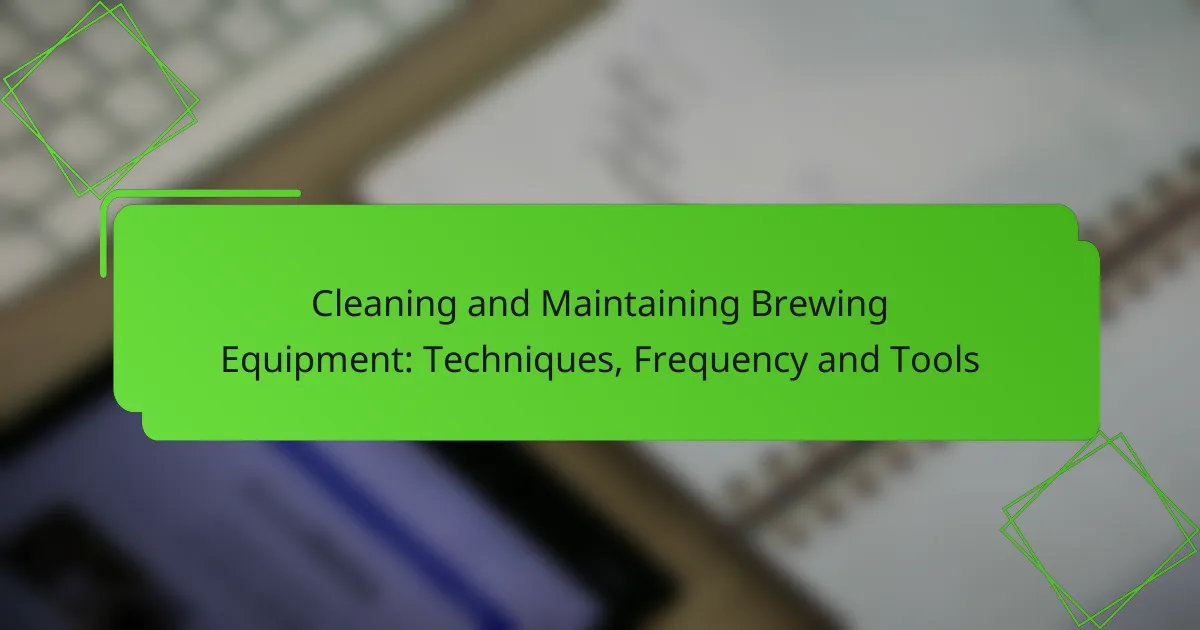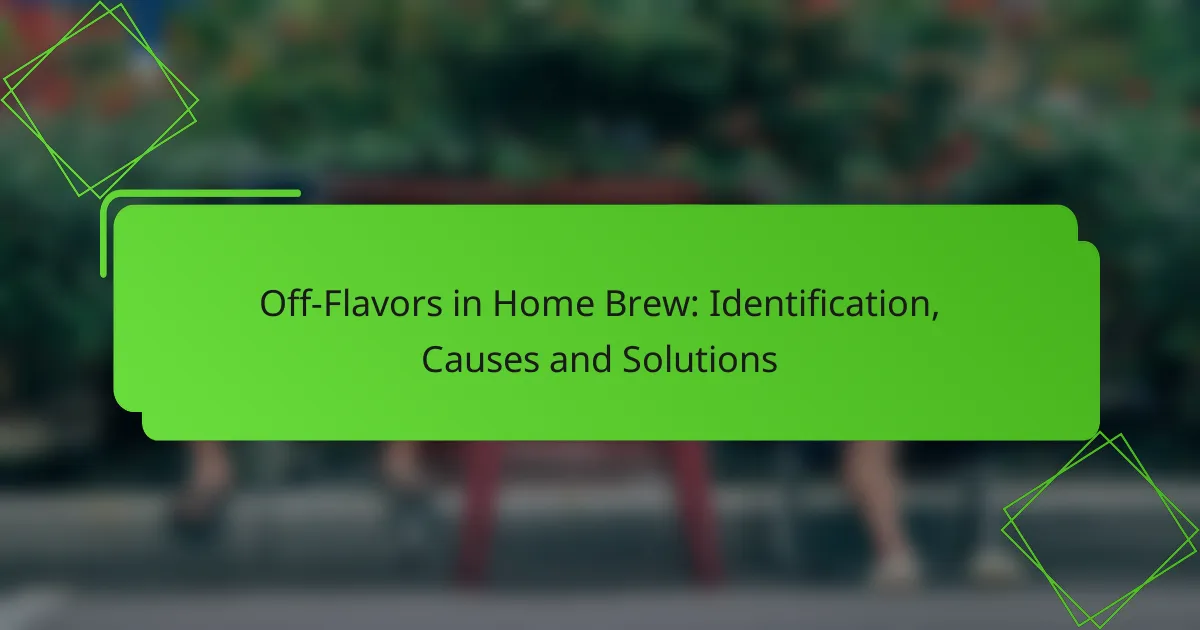Cleaning and maintaining brewing equipment is crucial for producing high-quality brews and ensuring the longevity of your tools. Utilizing the right techniques and essential tools, such as brushes and sanitizers, can effectively remove residues and prevent contamination. Regular maintenance, scheduled daily, weekly, and monthly, is key to keeping your brewing process efficient and safe.

How to clean brewing equipment effectively?
Cleaning brewing equipment effectively involves using the right techniques and tools to ensure all surfaces are free from residues and contaminants. Regular maintenance not only preserves the quality of your brews but also extends the lifespan of your equipment.
Use of specialized cleaning agents
Specialized cleaning agents are formulated to break down organic residues and sanitize surfaces. Common agents include caustic cleaners, acid cleaners, and non-foaming detergents, each suited for different types of equipment and residues.
When selecting a cleaning agent, consider the material of your brewing equipment. For instance, stainless steel may require different cleaners than plastic components. Always follow the manufacturer’s recommendations for safe and effective use.
Regular rinsing techniques
Regular rinsing is crucial in the cleaning process to remove loose debris and residues. Start by rinsing equipment with hot water immediately after use to prevent residues from hardening.
For effective rinsing, use a spray nozzle to ensure water reaches all surfaces, including hard-to-reach areas. This technique helps maintain cleanliness and prepares the equipment for deeper cleaning with agents.
Importance of sanitization
Sanitization is essential to eliminate harmful microorganisms that can spoil your brew. After cleaning, use a suitable sanitizer to ensure all surfaces are free from pathogens.
Common sanitizers include iodine-based solutions and chlorine dioxide. Ensure that the sanitizer is compatible with your equipment and follow the contact time recommended by the manufacturer for effective results.
Cleaning frequency recommendations
The frequency of cleaning brewing equipment depends on usage and type of brewing. For homebrewers, a thorough clean after each batch is recommended, while commercial brewers may need to clean daily or even after every use.
Establish a routine based on your brewing schedule. For instance, fermenters may require cleaning every few weeks, while kegs should be cleaned after each use to prevent contamination.
Best practices for different equipment types
Different types of brewing equipment require tailored cleaning practices. For example, kettles should be cleaned with a non-abrasive cleaner to avoid scratching, while fermenters may need a more thorough sanitization process.
Consider using a dedicated cleaning brush for each type of equipment to avoid cross-contamination. Additionally, always ensure that all parts are completely dry before storage to prevent mold growth.

What tools are essential for maintaining brewing equipment?
Essential tools for maintaining brewing equipment include brushes, sanitizers, and pH testing kits. These tools help ensure cleanliness, prevent contamination, and maintain optimal brewing conditions.
Recommended brushes and scrubbing tools
Using the right brushes and scrubbing tools is crucial for effective cleaning of brewing equipment. A variety of brushes, such as bottle brushes, carboy brushes, and soft scrub brushes, can reach different surfaces and angles in your equipment.
For stubborn residues, consider using scrubbing pads or sponges designed for brewing. Avoid abrasive materials that can scratch surfaces, as this can harbor bacteria and affect the quality of your brew.
Importance of pH testing kits
pH testing kits are vital for monitoring the acidity levels in your brewing water and finished product. Maintaining the correct pH range, typically between 5.0 and 5.5 for most beers, can significantly impact flavor and fermentation efficiency.
Regular testing allows brewers to adjust their water chemistry and ensure optimal conditions for yeast activity. Investing in a reliable pH meter or test strips can help you achieve consistent results.
Best sanitizers for brewing
Choosing the right sanitizer is essential for preventing contamination in your brewing process. Common options include iodine-based sanitizers, quaternary ammonium compounds, and peracetic acid, each with its own strengths and weaknesses.
When selecting a sanitizer, consider factors like contact time, effectiveness against various microorganisms, and ease of use. Follow the manufacturer’s instructions for dilution and contact time to ensure proper sanitation of your equipment.

How often should brewing equipment be maintained?
Brewing equipment should be maintained regularly to ensure optimal performance and quality. Daily, weekly, and monthly maintenance tasks help prevent contamination and equipment failure, keeping your brewing process efficient and safe.
Daily maintenance tasks
Daily maintenance tasks are crucial for keeping brewing equipment in top shape. Start by cleaning all surfaces that come into contact with ingredients, including fermenters and kettles, to prevent microbial growth. Rinse and sanitize hoses and fittings to ensure no residue remains from previous brews.
Additionally, check for any leaks or signs of wear on seals and gaskets. Addressing these issues promptly can save time and money in the long run.
Weekly cleaning routines
Weekly cleaning routines should involve a more thorough inspection and cleaning of all equipment. This includes disassembling and cleaning parts like valves and pumps to remove any buildup that may have accumulated. Use appropriate cleaning agents that are safe for brewing equipment to avoid contamination.
Consider creating a checklist for weekly tasks to ensure nothing is overlooked. This routine helps maintain hygiene and prolongs the lifespan of your equipment.
Monthly deep cleaning schedules
Monthly deep cleaning schedules are essential for comprehensive maintenance of brewing equipment. During this time, perform a detailed inspection of all components, including checking for corrosion or damage that may not be visible during regular cleaning. This is also a good time to replace any worn-out parts.
Deep cleaning may involve soaking components in cleaning solutions or using specialized equipment like ultrasonic cleaners for hard-to-reach areas. Establishing a consistent monthly schedule helps maintain high brewing standards and ensures equipment reliability.

What are the common mistakes in brewing equipment maintenance?
Common mistakes in brewing equipment maintenance include neglecting sanitation, using inappropriate cleaning agents, and overlooking wear and tear. These errors can lead to contamination, ineffective cleaning, and ultimately, compromised brew quality.
Neglecting to sanitize
Sanitization is crucial in brewing to prevent unwanted bacteria and wild yeast from spoiling your beer. Failing to properly sanitize equipment can lead to off-flavors and spoilage, which can ruin an entire batch. Always use a reliable sanitizer and follow the manufacturer’s instructions for effective results.
To ensure proper sanitation, consider using a no-rinse sanitizer, which can save time and reduce the risk of residual chemicals affecting your brew. Regularly check and replace sanitizing solutions to maintain their effectiveness.
Using incorrect cleaning agents
Using the wrong cleaning agents can damage your brewing equipment and leave harmful residues. It’s essential to choose cleaners specifically designed for brewing equipment, as household cleaners may contain chemicals that are not safe for food contact surfaces.
When selecting cleaning agents, look for products that are effective against beerstone and other residues. Always read labels to ensure compatibility with your equipment materials, and avoid abrasive cleaners that can scratch surfaces.
Ignoring equipment wear and tear
Regularly inspecting your brewing equipment for signs of wear and tear is vital for maintaining its functionality. Components such as seals, gaskets, and hoses can degrade over time, leading to leaks and inefficiencies. Schedule routine checks to identify and replace worn parts before they cause significant issues.
Consider keeping a maintenance log to track the condition of your equipment and schedule replacements. This proactive approach can help you avoid costly repairs and ensure consistent brewing quality.

How to choose the right cleaning products for brewing?
Selecting the right cleaning products for brewing is essential to ensure the quality and safety of your beverages. Look for cleaners that are effective against organic residues, safe for food contact surfaces, and compatible with your equipment materials.
Criteria for selecting cleaning agents
When choosing cleaning agents, consider their effectiveness in removing specific residues like yeast, hops, and proteins. Look for products that are non-toxic and biodegradable to minimize environmental impact. Additionally, ensure that the cleaners are safe for the materials of your brewing equipment, such as stainless steel or plastic.
pH levels of the cleaning agents can also play a significant role; alkaline cleaners are often effective for tough stains, while acidic cleaners can help remove mineral deposits. Always check for compatibility with your brewing process and any local regulations regarding cleaning agents.
Top brands for brewing cleaners
Several brands are well-regarded in the brewing community for their effective cleaning products. Brands like PBW (Powdered Brewery Wash) and Star San are popular choices due to their reliability and ease of use. They offer formulations specifically designed for brewing equipment, ensuring thorough cleaning without harmful residues.
Other notable brands include BLC (Brewing Line Cleaner) and One Step, which are recognized for their effectiveness and safety. When selecting a brand, consider user reviews and recommendations from fellow brewers to find the best fit for your cleaning needs.

What are the benefits of regular equipment maintenance?
Regular equipment maintenance ensures optimal performance and longevity of brewing tools, leading to better beer quality and reduced costs over time. By adhering to a consistent maintenance schedule, brewers can prevent issues that may compromise their brewing process.
Improved beer quality
Maintaining brewing equipment directly enhances the quality of the beer produced. Clean and well-maintained tools prevent off-flavors and contamination, ensuring that each batch meets the desired flavor profile.
To achieve this, brewers should regularly clean fermenters, kegs, and other equipment using appropriate cleaning agents. For example, using a caustic cleaner followed by an acid rinse can effectively remove residues and prevent microbial growth.
Establishing a routine cleaning schedule, such as after every brew or weekly for less frequently used equipment, can significantly improve the consistency and taste of the beer. Avoiding shortcuts in maintenance can save time and resources in the long run by preventing costly reworks or spoilage.



